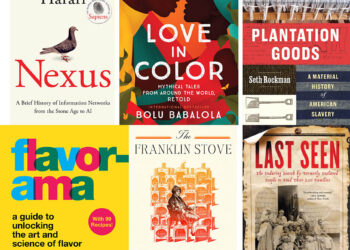
Earlier this week, Taylor & Francis and its parent company, Informa, published the results of a broad survey of academic authors regarding their views of open access (OA) publishing and trends. It’s an interesting glimpse into how difficult it is to reconcile the desire for free content and complete access with the realities of academic life and financial sustainability. It’s also a flawed survey, despite its robust response rate, as it conflates too many disciplines to create a blended picture that probably applies to no discipline in particular.
The healthy overall response rate of 19% yielded 14,769 responses to the survey instrument. In one section of the survey, the responses were bifurcated so that half the respondents answered questions about what they anticipate will happen while the other half indicated what they wanted to happen regarding the same topics.
The respondents skew slightly toward the humanities and social sciences, with approximately 45% of the responses coming from fields like humanities, behavioral sciences, education, politics, and law. In comparison, 43% of responses came from people in disciplines like engineering, mathematics, biology, chemistry, physics, and geology. Conflating and combining these results perpetuates one of the biggest myths of OA — that one size fits all. As we’ve seen, biomedicine and history and physics and computer science each has found its own unique way of dealing with demands for greater access to the literature. Presenting these findings as if they represent one community’s assessment and opinion is a large and seductive flaw.
The results are portrayed clearly in good graphs that allow for fair interpretations, and don’t try to impose too many visual value judgments on the aggregate responses.
Perhaps the clearest and most surprising finding is that there is a great deal of discomfort with CC-BY licenses. In fact, in a question asking respondents to pick between granting an exclusive license to a publisher, using a CC-BY-NC-NP license, signing over copyright, using a CC-BY-NC license, using a CC-BY-ND license, or using a CC-BY license, the CC-BY lost by a mile — 52% of respondents said it was their least-preferred license, a far higher rate than any other license. Copyright assignment was the next least-preferred, but even it registered a relatively paltry 17% rate of disfavor (copyright was also the third most-preferred approach, while CC-BY was the laggard in most-preferred, making CC-BY the clear loser of the batch). This dislike for the CC-BY bargain doesn’t bode well for the orthodox definition of OA, which depends on the CC-BY license and defends it reflexively; of course, the RCUK mandate also requires it.
Other findings I took away from the survey:
- Academics aren’t really following the OA movement in any great detail, but they have internalized some accurate information nevertheless — that OA articles are more widely circulated but not necessarily to other researchers, and that OA doesn’t lead to more citations, for instance.
- There is skepticism that OA drives innovation, and some uncertainty about quality and production values. However, there is a strong feeling that OA offers fundamental benefits.
- The strongest point of agreement comes in response to the notion that publication of research should not be limited by the ability to pay. At the same time, there is good agreement that all research outputs should be free for everyone to read online.
This last point represents the pattern found in much of the survey — tensions between the ideal and the real. More particularly, how nobody pays for what everyone should have becomes a looming issue in this juxtaposition of questions.
The practical answers come later in the survey, where respondents show their pragmatism when faced with more earthbound questions. For instance, when asked to choose between publishing in the best journal possible regardless of cost, a journal that doesn’t charge for publication, or a journal that doesn’t charge for reading, the chips fall pretty much as you’d expect — 52% go for the best journal, regardless of cost; 39% go for a journal that doesn’t charge them to publish; and 9% prefer journals that don’t charge readers. Traditional peer review and rigorous standards also seem to beat out fast publication times and accelerated peer review overall, but when an OA journal is the venue in question, these criteria change a little, with greater expectations emerging around rapid review and publication.
Funding options and mandates are also explored, with little funding support offered and mandates apparently not driving much behavior yet. The “I don’t know” zones are especially large in some of these charts. To me, watching the middle areas in these graphs — the yellow areas in some, the mid-blues in others — provided most of the fun. There are vast areas of “um . . .” in these results.
As mentioned above, the survey was split into two parts, one exploring what respondents “think” will happen, the other exploring what they “want” to happen. There isn’t much of a gap between the two in most cases, but where there are differences, they are potentially important. For instance, more respondents think funders will dictate where they publish (31%) than like this idea (11%). Some antipathy toward impact factors is to be found, as well.
It’s an interesting survey, and well worth reviewing, despite its shortcomings. I hope that Taylor & Francis or Informa take some time to provide slices that are domain-specific, if there’s a way to do so legitimately, without sacrificing the statistical power of the survey. At least then we’d have something more approximate to meaningful community preferences. As it stands, this is an interesting snapshot of a crowd, and somewhere in the crowd are the people we care about. Unfortunately, we can’t tell which ones they are.
Discussion
13 Thoughts on "Open Access — Idealism and Realism Remain Difficult to Reconcile, Survey Says"
Reblogged this on Okonomibloggy and commented:
The Scholarly Kitchen reports on a survey of academic authors on open access.
I was intrigued by the conflicting answers. One statement: ‘There should be no restrictions on reuse of research outputs’ — 44% agreed or strongly agreed, 33% disagreed or strongly disagreed. Another [equivalent!] statement: ‘It is acceptable for others to use my work for commercial gain without my prior knowledge or permission, provided I receive credit as the original author’ — only 18% agreed or strongly agreed, while 67% disagreed or strongly disagreed.
The large “I do not know” responses are part of a large distribution spread on both sides of most issues. This is a prescription for limited policy action as the community has no clear direction.
Kent concludes “This dislike for the CC-BY bargain doesn’t bode well for the orthodox definition of OA,” while David contends that the “not know” “is a prescription for limited policy action as the community has no clear direction.” I’m not sure the data necessarily tells us any of this.
To get a sense of future directionality one really needs to see the responses analyzed by age cohort. If opposition to OA is driven by older age groups, while support is highest among the younger, then demographics is destiny. But we don’t know if that hypothesis is true or not because of the way the data is analyzed.
On the contrary this could be a “standing wave” pattern where opinions change with aging. The young are normally most radical.
I think this is an important concept which is often ignored. We have, for at least a decade or so been hearing about the “born digitals” or the “digital natives”, and how we’re all going to have to radically change what we do because kids today do things in a different way. Yet over time, the needs and the behaviors of those kids change. The digital natives who grew up on Myspace moved to Facebook as they got older, and now likely (gasp) use email in their jobs.
For a teenager, email is something that old people do. Yet when that teenager enters the workforce as an adult, they become part of a larger group that communicates via email. The entry level worker cannot impose their will on the system they’re looking to join. I’m not sure many senior executives would enjoy being told by their mailroom clerks that they are only going to communicate via Snapchat.
The same sorts of behavioral change takes place over a career in research as well. What works well for the graduate student may not work as well for a principle investigator. Each has different needs and each needs to work within an established system in order to progress. A first year graduate student who has no concept of lab finances may feel strongly that all papers should be made OA via paying an article processing charge. A PI, struggling to find funding, who has to decide whether to let a technician or postdoc go because their salary can’t be covered, may have a different set of priorities as to where those funds should go.
This is not the only concern about CC-BY being voiced, nor is the degree of dislike modest. The age cohorts in the survey don’t seem skewed.
Thanks for picking up on the survey. You raised a very valid concern about the lack of a subject breakdown but happily we were already working on this, so I’m able to point readers at some supplementary analysis showing subject and regional breakdowns for the questions on most and least preferred licences: http://www.tandf.co.uk/journals/explore/open-access-survey-supp1.pdf
We are working on breakdowns for other key questions, though obviously the statistical power for these will be reduced due to small sample sizes.
Excellent. Thank you for bringing this to my attention and the supplemental materials. I am getting questions from my Board about OA. They are hearing about it, worried about it, excited about it but have no idea what the market is all about. Surveys like this are enormously helpful to those of us who don’t have access to large numbers of researchers and need this information.



